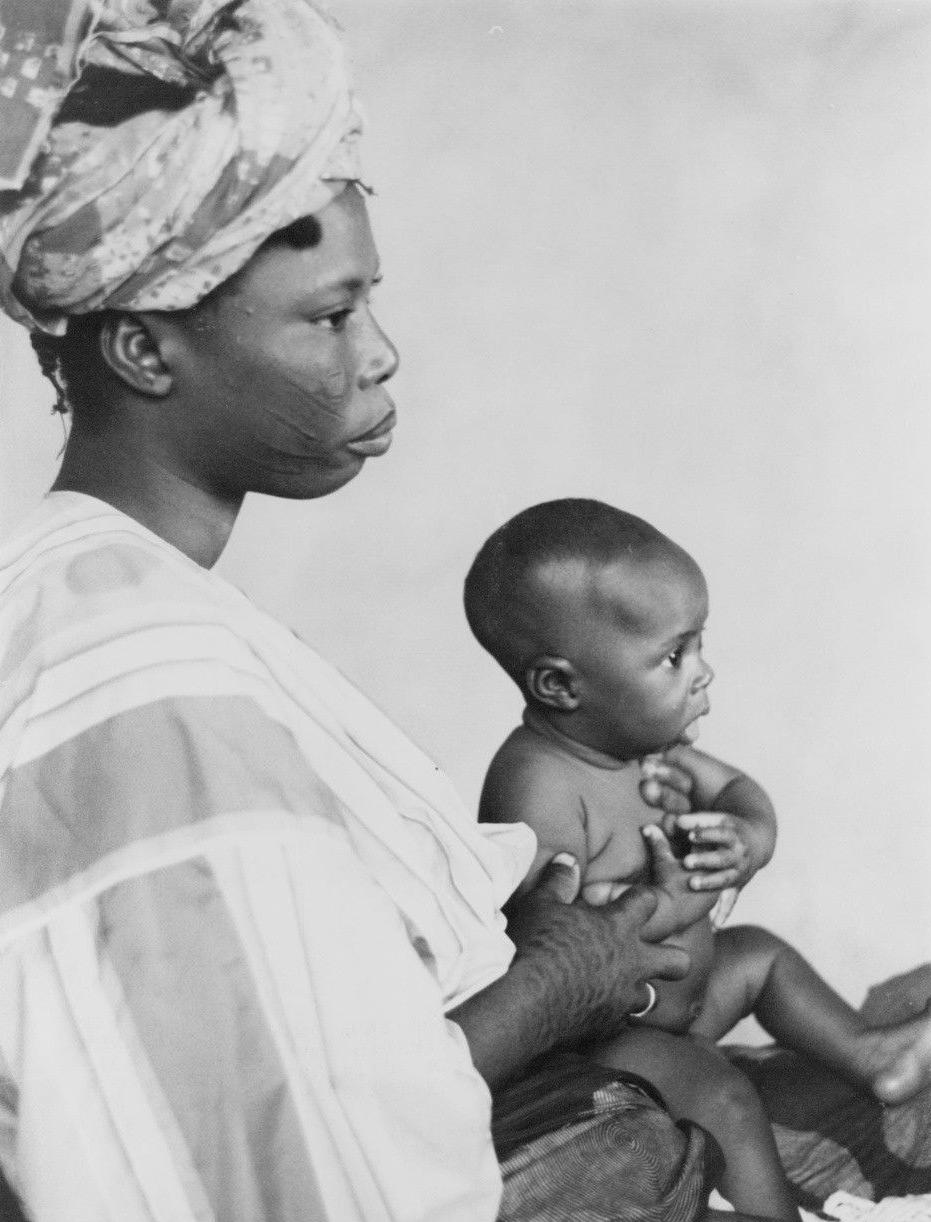
Nigeria/Benin Tribes: The Yourba

Figure 1.--Here we see Yoruba mother and her baby. The press caption read, "A Yoruba tribe mother and child report for a pediatrics cionsultation with a physician sent to the field from Ibadan, Nigeria. Their native village is Abebeyun (meaning 'one must be begged and ragged to settle there'). The photograph is dated June3, 1967. | |
The Yoruba (Ioruba or Joruba) are primarily a tribe in modern Nigeria. The dominate southwestern and north-central Nigeria and neigboring southern and central Benin. The area is collctively nknown as Yorubaland. The population is estimated at some 40 million people in total. The Yoruba constitute over 20 percent of the Nogrerian population. This majes them kne of the lsrger African tribal groups. They speak the Yoruba language, which is the largest language in the Niger-Congo language group. They are bordered by several different tribal people. They brder on the area of the vlosely related Itsekiri people in the southeast in the northwest Niger delta. They share a common ancestry with the Yoruba but chose for some reason to maintain a distinct cultural identity. There are small Yoruba populations in Ghana, Ivory Coast, Liberia, and Sierra Leone. The Yoruba develop in what is now Yourubaland from the Mesolithic Volta-Niger population (1st millennium BC). . Oral history suggests that Oyo Empire was based on the Yoruba which developed from the older kingdom of Ile-Ife. The Yoruba were established as the dominant cultural griup in southern Nigeria (11th century). The Yoruba are among the most urbanized tribal people in Africa. This predates the colonial era by centuries. The British report tht they found the Yoruba living in well structured urban centers as part of a system of city states (Ìlú). These were organized around the residence of the Oba. Archeologists report that ancient cities were fortresses, with high walls and gates. This suggests a high level of warfare. Yoruba cities are believed to be among the largest in pre-clonial Africa. The Òyó-Ilé or Katunga, capital of the Yoruba Empire of Oyo had a population of some 100,000 (11th-19th century). This is believed to be the largest urban settlement in Africa at the time. Ibadan was one of the major Yoruba cities and for a long time was the largest city in all of Sub Saharan Africa. Modern Lagos (Èkó) was another important Yoruba city and with a population of more than 20 million is today the largest African city. The Yoruba diaspora consists of two main groups. One is related to the African slave trade which severely impacted the Yoruba. And led to Yoruba communities throughout the Caribbean abnd Brazil. There was also emigration to America and Britain (1960s-80s). The Yoruba are seen as a religious people. They are primarily Chrustian, but do not view the various religions as sparare s do most Chritian and Muslim adherents. Yoruba in Caribbean slavery played an important role in the development of Voodoo which in Nigeria and Benin has more of a status as a legitimate religion than in the Caribbean outside of Haiti.
HBC

Navigate the Boys' Historical Clothing Web Site:
[Introduction][Activities][Biographies][Chronology][Cloth and textiles][Clothing styles][Countries][Topics]
[Bibliographies][Contributions][FAQs][Glossaries][Images][Links][Registration][Tools]
[Boys' Clothing Home]
Navigate the Boys' Historical Clothing national pages:
[Return to the Main Nigerian page]
[Return to the Main Benin page]
[Return to the Main African tribal page]
[Return to the Main African page]
[Angola][Cape Verde Islands][Democratic Republic of the Congo][Ethiopia][Gabon][Lessotho]
[Madagascar][Mali][Nigeria][Somalia][South Africa][Uganda]
Created: 10:27 AM 10/9/2018
Last updated: 4:31 AM 10/10/2018



